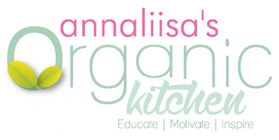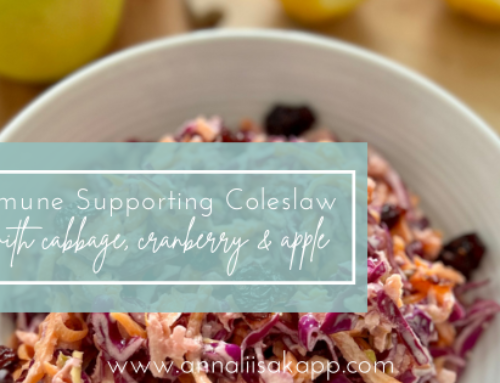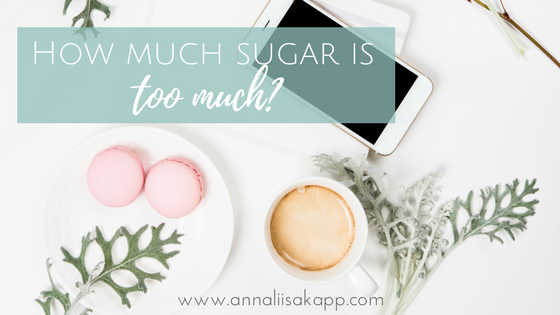
It’s official! Organizations and governments are (finally) declaring a maximum amount of daily sugar intake.
While this is a step forward, there are still a few problems. One – they don’t all agree with each other. And, two, I don’t necessarily agree with them either.
We all know sugar is NOT a health food. It isn’t full of nutrition, and excess consumption is not associated with great health.
The problem is that sugar is everywhere. It’s naturally occurring. It’s also added to just about every processed food there is. And this “added sugar” is a factor in many chronic diseases we see today. Sugar is inflammatory. Too much is associated with weight gain, diabetes, heart disease, cancer, and cavities. Too much sugar is a huge health risk, no matter how you look at it.
So let’s talk about how much sugar is “too much.”
.
Added sugar vs. naturally occurring sugar. What do some of the officials say?
Before we talk about the “official” numbers (and why I don’t agree with them), you need to know the difference between “added” sugar and “naturally occurring” sugar.
Fruit and other healthy whole foods contain sugar. They also contain water, fiber, vitamins, minerals, and other phytochemicals. They are good for you. Eating fruits and vegetables is a well-proven way to reduce your risks of many chronic diseases.
“Added sugars,” on the other hand, are concerning. In 2013, the American Heart Association calculated that about 25,000 deaths per year were due to sweetened beverages. “Added sugars” are also in baked goods, candies, soups, sauces and other processed foods. You can find sugar on the ingredient list as many names, often ending in “-ose.” These include glucose, fructose, sucrose, etc.
So, “Total sugars” = “Naturally occurring sugars” + “Added sugars.”
The “official” change is the new Nutrition Facts tables. You may remember that in Canada and the USA, they declare the amount of sugar, but don’t give it a %DV (% daily value); this means, they’ve never had a “benchmark” maximum daily value to use. They haven’t declared how much is too much. Now, both countries are implementing a %DV for sugar.
In Canada, the %DV is based on 100 g/day of total sugar. Unfortunately, this number is large because it includes both naturally occurring and added sugars. The %DV is in-line with the Canadian Heart & Stroke Foundation’s recommendations of no more than 90 g of total sugars per day.
In 2008, the average daily total sugar intake in the USA was 76.7 grams per day; this is less than these two benchmarks. Yet, it doesn’t seem that people are getting healthier. I’d argue that 100 g per day total sugar is still too high.
In the USA, the labels are changing too. They are not declaring “total” sugars but will differentiate between naturally occurring and added sugars. They have decided on a maximum of 50 g of “added” sugars each day. Unfortunately, this is still more than the American Heart Association’s recommended maximum of 24 g/day added sugar for women, and 36 g/day added sugar for men.
.
What is a better daily sugar goal?
While these official numbers are a step in the right direction, they’re not what I would recommend.
For one thing, I’d ditch as many processed food as possible, regardless of their sugar content. There are a ton of studies that show that processed foods are bad for your health. Period. I wouldn’t recommend eating your “daily value” of sugar from sweetened processed foods. I don’t recommend even 50 g of “added” sugar per day. Get your sugar from whole, unprocessed fruits first.
Second, you don’t even need to max out your daily sugar intake. I promise! Try to reduce your sugar intake below these “official” amounts for an even better goal.
.
Tips to reduce your sugar intake
Here are some of my most popular recommendations to reduce your sugar intake, so you don’t get too much:
- Reduce (or eliminate) sugar-sweetened beverages; this includes soda pop, sweetened coffee/tea, sports drinks, etc. Instead, have fruit-infused water. Or try drinking your coffee/tea “black” or with a touch of cinnamon or vanilla instead.
- Reduce (or eliminate) your desserts and baked goods and bake your own instead. You can easily reduce the sugar in a recipe by half. Or try my delicious (no added sugar) dessert recipe below.
- Instead of a granola bar (or other sugary snack), try fruit, a handful of nuts, or veggies with hummus. These are easy grab-and-go snacks if you prepare them in a “to-go” container the night before.
Let me know in the comments your favorite tips to reduce your sugar intake!
.
Recipe (No added sugar): Soft Serve Nice Cream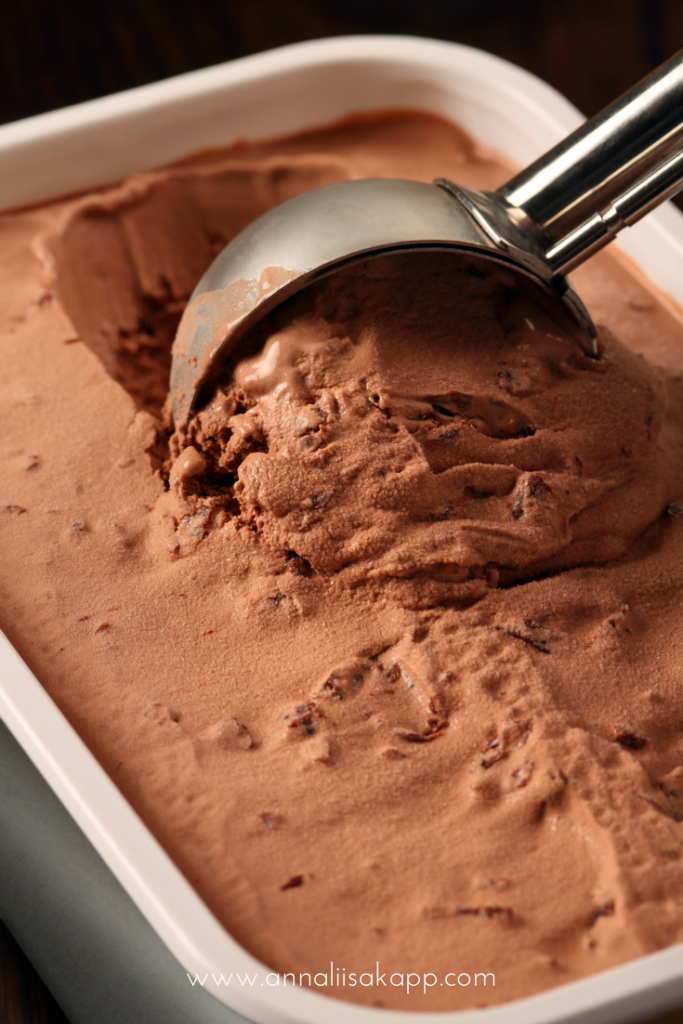
Serves 1
½ cup vanilla almond milk (unsweetened)
½ tsp vanilla extract
1 Tbsp almond butter
1 tbsp raw cacao powder (unsweetened)
1 banana, frozen
How to make:
Add everything into a blender. Blend just until smooth.
If you don’t have a high speed blender, you may have to add a bit more liquid and place the nice cream in the freezer for an hour before serving.
Serve & enjoy!
Tip: Double the recipe to share!
xx
NOTE: If you don’t have raw cacao (the unprocessed version of cocoa), then use unsweetened cocoa powder.
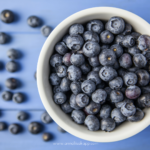
Are sugar and carb cravings getting the best of you? Did you know that sugar cravings are more physiological than emotional? Which is great news, because that’s easier to manage.
Join us for a FREE 5 Day Sugar Freedom Challenge.
You’ll get access to amazing simple recipes to cut your cravings in just a couple of days + important resources to help you transition into living a low sugar lifestyle so you can enjoy better energy and freedom from cravings.
